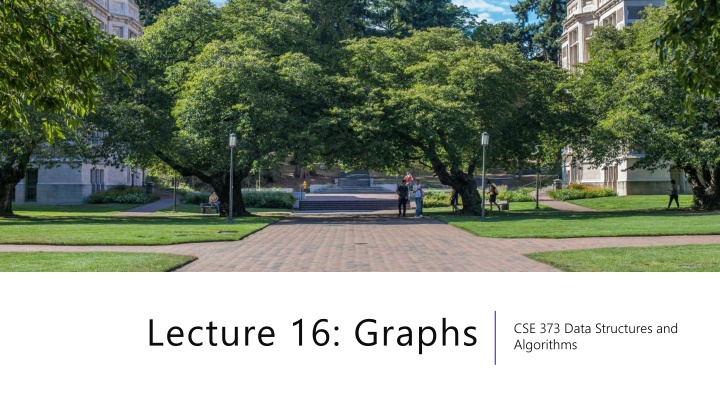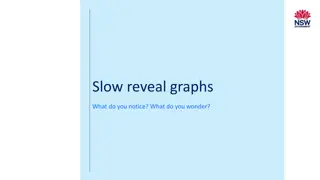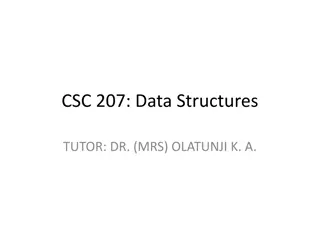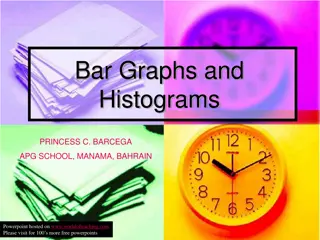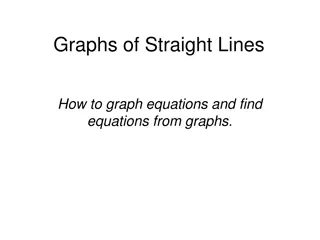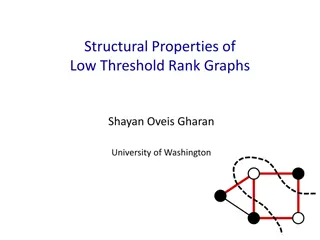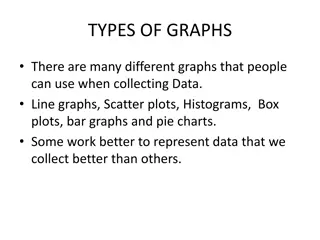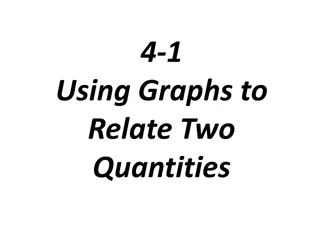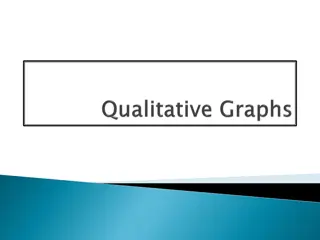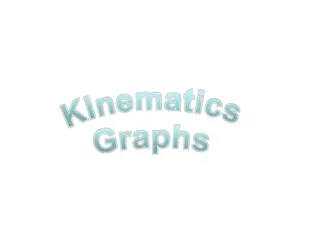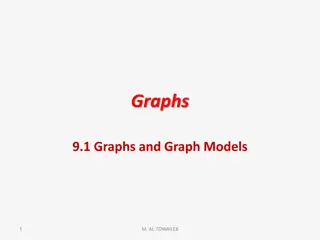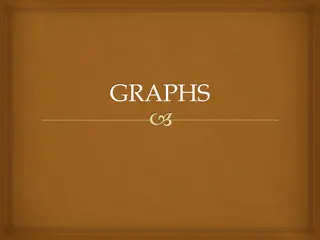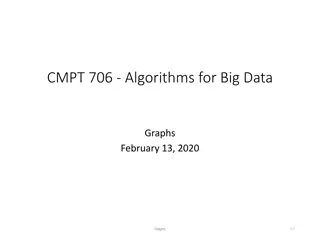Graphs: Versatile Data Structures and Their Applications
Graphs are powerful abstract data types that can represent various structures and relationships in data. They go beyond traditional data structures to model complex systems such as social networks, maps, and program dependencies. Graphs play a crucial role in modern technology, from search algorithms to version control systems, showcasing their versatility in representing different types of data and their interconnections.
Download Presentation

Please find below an Image/Link to download the presentation.
The content on the website is provided AS IS for your information and personal use only. It may not be sold, licensed, or shared on other websites without obtaining consent from the author.If you encounter any issues during the download, it is possible that the publisher has removed the file from their server.
You are allowed to download the files provided on this website for personal or commercial use, subject to the condition that they are used lawfully. All files are the property of their respective owners.
The content on the website is provided AS IS for your information and personal use only. It may not be sold, licensed, or shared on other websites without obtaining consent from the author.
E N D
Presentation Transcript
Lecture 16: Graphs CSE 373 Data Structures and Algorithms
Administrivia Exercise 3 due tonight. Exercise 4 out today. Robbie has one-on-one talk about the midterm/your grade office hours today (2:30-4 in CSE 330)
Sorting Summary You have a bunch of data. How do you sort it? Honestly use your language s default implementation -It s been carefully optimized. In practice, quicksort usually has the best constant factors among those we ve discussed. (But remember it s worst case is (?2).) Choose a specific algorithm If you re situation is special -Not a lot of extra memory? Use an in-place sort. -Want to sort repeatedly to break ties? Use a stable sort. -Know your data is integers in a small range? Maybe radix sort.
ADTs so far Queues and Stacks -We want to process our data in some order (based on when they were inserted) Lists -We want to maintain an order, but add or remove from anywhere Priority Queues -Our data had some priority we needed to keep track of, and wanted to process in order of importance. Dictionaries -Our data points came as (key, value) pairs. -Quickly find the value for a key
Graphs (pattern of abstract data types) We ll list Graphs as one of our ADTs But don t let that limit your thinking. They are more versatile than any ADT we ve seen before.
Graphs Graphs are versatile enough, I m not going to show you one of those gold boxes with states and behaviors The state/behaviors to track change with every new problem we try to solve.
Graphs Everything is graphs. Most things we ve studied this quarter can be represented by graphs. - BSTs are graphs - Linked lists? Graphs. - Heaps? Also can be represented as graphs. - Those trees we drew in the tree method? Graphs. But it s not just data structures that we ve discussed - Google Maps database? Graph. - Facebook? They have a graph search team. Because it s a graph - Gitlab s history of a repository? Graph. - Those pictures of prerequisites in your program? Graphs. - Family tree? That s a graph
Graphs Represent data points and the relationships between pairs of them. That s vague. B D Formally: A graph is a pair: G = (V,E) V: set of vertices vertices (aka nodes E: set of edges edges -Each edge is a pair of vertices. A C nodes) {?,?,?,?} {(?,?),(?,?),(?,?),(?,?)}
Graph Terms This graph is disconnected. Graphs can be directed or undirected. Following on twitter. Degree: 2 Kasey Kasey Outdegree: 2 Robbie Robbie Zach Degree: 0 Friendships on Facebook. Zach Indegree: 2
Making Graphs If your problem has data it as a graph How do you choose a representation? data and relationships relationships, you might want to represent Usually: Think about what your fundamental objects are -Those become your vertices. Then think about how they re related -Those become your edges.
Some examples For each of the following think about what you should choose for vertices and edges. The internet pollEV.com/cse373su19 Which of these did you talk most about with your neighbors? Family tree Input data for the 6 degrees of Kevin Bacon game Course Prerequisites
Some examples For each of the following think about what you should choose for vertices and edges. The internet -Vertices: webpages. Edges from a to b if a has a hyperlink to b. Family tree -Vertices: people. Edges: from parent to child, maybe for marriages too? Input data for the 6 Degrees of Kevin Bacon game -Vertices: actors. Edges: if two people appeared in the same movie -Or: Vertices for actors and movies, edge from actors to movies they appeared in. Course Prerequisites -Vertices: courses. Edge: from a to b if a is a prereq for b.
Graph Terms Walk Walk A sequence of adjacent adjacent vertices. Each connected to next by an edge. A,B,C,D is a walk. So is A,B,A B A C D (Directed) (Directed) Walk Walk must follow the direction of the edges A,B,C,D,B is a directed walk. A,B,A is not. B A C D Length Length The number of edges in a walk - (A,B,C,D) has length 3.
Graph Terms Path Path A walk that doesn t repeat a vertex. A,B,C,D is a path. A,B,A is not. B A C D Cycle Cycle path with an extra edge from last vertex back to first. B A C D Be careful looking at other sources. Some people call our walks paths and our paths simple paths Use the definitions on these slides.
4 Adjacency Matrix 0 1 5 6 2 3 In an adjacency matrix a[u][v] is 1 if there is an edge (u,v), and 0 otherwise. Worst-case Time Complexity (|V| = n, |E| = m): Add Edge: Remove Edge: Check edge exists from (u,v): Get outneighbors of u: Get inneighbors of u: 0 1 2 3 4 5 6 0 1 2 3 4 5 6 0 1 1 0 0 0 0 1 0 0 1 0 0 0 1 0 0 1 0 0 0 0 1 1 0 0 1 0 0 0 0 0 0 1 0 0 0 0 1 1 0 0 0 0 0 0 0 0 0 (1) (1) (1) (?) (?) (?2) Space Complexity:
Adjacency List 4 0 1 5 6 2 3 An array where the ?th element contains a list of neighbors of ?. Directed graphs: list of out-neighbors (a[u] has v for all (u,v) in E) Time Complexity (|V| = n, |E| = m): Add Edge: Remove Edge (u,v): Check edge exists from (u,v): Get neighbors of u (out): Get neighbors of u (in): 1 2 0 3 0 3 1 2 5 0 1 2 3 (1) 5 4 ( deg(?) ) 3 4 5 ( deg(?) ) 6 (deg ? ) (? + ?) Suppose we use a linked list for each node. Space Complexity: (? + ?)
Adjacency List 4 0 1 5 6 2 3 An array where the ?th element contains a list of neighbors of ?. Directed graphs: list of out-neighbors (a[u] has v for all (u,v) in E) Time Complexity (|V| = n, |E| = m): Add Edge: Remove Edge: Check edge exists from (u,v): Get neighbors of u (out): Get neighbors of u (in): 1 2 0 3 0 3 1 2 5 0 1 2 3 (1) ( 1 ) 5 4 3 4 5 ( 1 ) (deg(?)) (? ) 6 Switch the linked lists to hash tables, and do in-practice analysis. Space Complexity: (? + ?)
Tradeoffs Adjacency Matrices take more space, and have slower () bounds, why would you use them? - For dense dense graphs (where ? is close to ?2), the running times will be close - And the constant factors can be much better for matrices than for lists. - Sometimes the matrix itself is useful ( spectral graph theory ) What s the tradeoff between using linked lists and hash tables for the list of neighbors? - A hash table still might hit a worst-case - And the linked list might not - Graph algorithms often just need to iterate over all the neighbors, so you might get a better guarantee with the linked list. For this class, unless we say otherwise, we ll assume the hash tables operations on graphs are all ? 1 . - Because you can probably control the keys. Unless we say otherwise, assume we re using an adjacency list with hash tables for each list. on graphs
Breadth First Search search(graph) toVisit.enqueue(first vertex) mark first vertex as seen while(toVisit is not empty) current = toVisit.dequeue() for (v : current.neighbors()) if (v is not seen) mark v as seen toVisit.enqueue(v) J F G D A I H E B C Current node: Queue: Finished: A B D E C F G G H I B D E C D F G C F H G I I A B E H
Breadth First Search search(graph) toVisit.enqueue(first vertex) mark first vertex as seen while(toVisit is not empty) current = toVisit.dequeue() for (v : current.neighbors()) if (v is not seen) mark v as seen toVisit.enqueue(v) J F G D A I H E B C Hey we missed something We re only going to find vertices we can reach from our starting point. If you need to visit everything, just start BFS again somewhere you haven t visited until you ve found everything.
Running Time search(graph) toVisit.enqueue(first vertex) mark first vertex as seen while(toVisit is not empty) current = toVisit.dequeue() for (v : current.neighbors()) if (v is not seen) mark v as seen toVisit.enqueue(v) This code might look like: a loop that goes around ? times Inside a loop that goes around ? times, So you might say ? ?? . That bound is not tight, Don t think about the loops, think about what happens overall. How many times is current changed? How many times does an edge get used to define current.neighbors? We visit each vertex at most twice, and each edge at most once: (|?| + |?|)
Implementation What does mark as seen mean? It s up to you! My lectures are going to assume that each vertex/edge is an object, and that we ve added whatever field we want into it. Alternatively, you can make seen a dictionary (keys are vertices, values are the variable we want to set) - Again, you control the keys, so you should be able to get 1 time without too much trouble. Regardless, you can do those operations in (1) time. In general our graph code will be a little more abstract I won t try to precisely say what fields each object has (it s more trouble than it s worth)
Depth First Search (DFS) BFS uses a queue to order which vertex we move to next Gives us a growing frontier movement across graph Can you move in a different pattern? What if you used a stack instead? bfs(graph) toVisit.enqueue(first vertex) mark first vertex as seen while(toVisit is not empty) current = toVisit.dequeue() for (v : current.neighbors()) if (v is not seen) mark v as seen toVisit.enqueue(v) dfs(graph) toVisit.push(first vertex) mark first vertex as seen while(toVisit is not empty) current = toVisit.pop() for (v : current.neighbors()) if (v is not seen) mark v as seen toVisit.push(v)
Depth First Search dfs(graph) toVisit.push(first vertex) mark first vertex as seen while(toVisit is not empty) current = toVisit.pop() for (v : current.neighbors()) if (v is not seen) mark v as seen toVisit.push(v) F J G D A I H E B C Current node: Stack: Finished: B E H G F I C D A F G H E D B E C I A B H G F I C D
DFS Worst-case running time? -Same as BFS: ?( ? + ? ) Indicentally, you can rewrite DFS to be a recursive method. -Use the call stack as your stack. -No easy trick to do the same with BFS.
BFS vs. DFS So why have two different traversals? For the same reason we had pre/post/in order traversals for trees! BFS and DFS will find vertices in a different order, so they can let you calculate different things. We ll see an application of BFS next week. And an application of DFS the week after.
